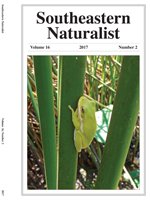Anthropogenic disturbance to natural habitats has been identified as a major threat to freshwater biodiversity. Human activities can destroy critical habitat of aquatic species by altering hydrodynamic stream characteristics. Movement and removal of shelter rocks within and along streams has been postulated to be detrimental to survival of aquatic salamanders; however, empirical data are lacking. Cryptobranchus alleganiensis alleganiensis (Eastern Hellbender) is a fully aquatic salamander species that shelters under cobble and boulder as both a juvenile and as an adult. Herein, we document mortality of both adult and larval Eastern Hellbender salamanders associated with anthropogenic habitat disturbance (i.e., moving and stacking of rocks to build small dams). To our knowledge, these observations are the first of their kind in the scientific literature. Given the high number of visitors to and increasing recreational use of rivers on public lands in the southeastern US, managers should consider implementing outreach education programs and monitoring popular recreation areas to deter in-stream habitat alteration.
How to translate text using browser tools
1 June 2017
Anthropogenic Associated Mortality in the Eastern Hellbender (Cryptobranchus alleganiensis alleganiensis)
Shem D. Unger,
Lori A. Williams,
John D. Groves,
Charles R. Lawson,
W. Jeffrey Humphries
ACCESS THE FULL ARTICLE

Southeastern Naturalist
Vol. 16 • No. 2
June 2017
Vol. 16 • No. 2
June 2017




